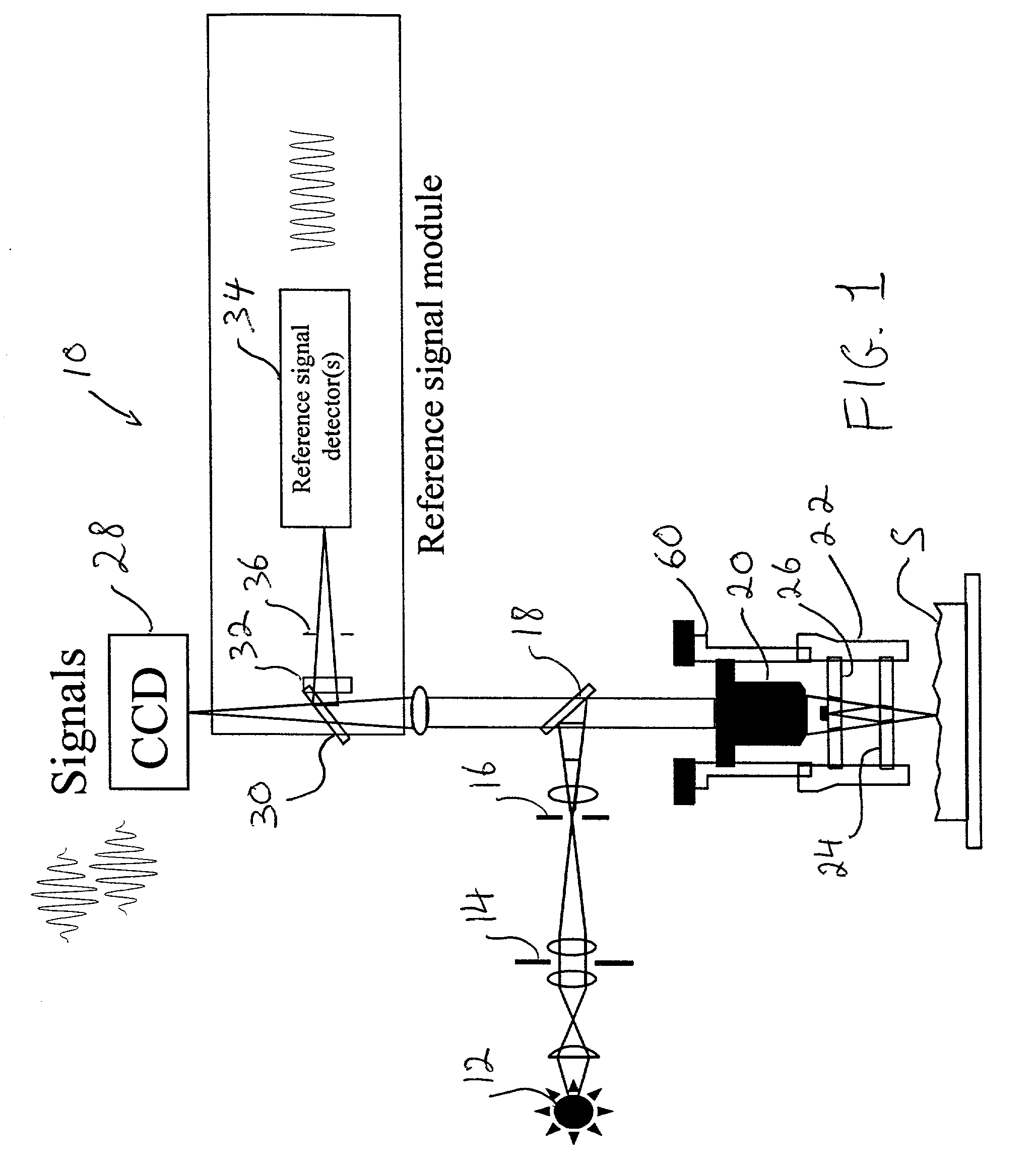Scanning interferometry with reference signal
- Summary
- Abstract
- Description
- Claims
- Application Information
AI Technical Summary
Problems solved by technology
Method used
Image
Examples
Embodiment Construction
[0031] The inventive concept of this disclosure resides in the idea of using a reference signal to track the actual behavior of the scanner in an interferometer to produce scanner-position data that can be used to correct errors introduced by scanner nonlinearities and other error sources. A narrow-band light source is advantageously utilized to cover the entire range of operation of the scanner. Thus, the invention is suitable for implementation with all types of conventional interferometric techniques.
[0032] The invention is described with reference to x, y and z orthogonal coordinates wherein x and y define the plane approximately parallel to the test surface and z defines the vertical scanning direction, but it is obvious that the structure and operation of the features detailed in this specification can be rotated in any direction with equivalent results. Also, the term "correlogram" is used to refer to the three-dimensional set of interferograms produced by a multistep scan du...
PUM
 Login to View More
Login to View More Abstract
Description
Claims
Application Information
 Login to View More
Login to View More - R&D
- Intellectual Property
- Life Sciences
- Materials
- Tech Scout
- Unparalleled Data Quality
- Higher Quality Content
- 60% Fewer Hallucinations
Browse by: Latest US Patents, China's latest patents, Technical Efficacy Thesaurus, Application Domain, Technology Topic, Popular Technical Reports.
© 2025 PatSnap. All rights reserved.Legal|Privacy policy|Modern Slavery Act Transparency Statement|Sitemap|About US| Contact US: help@patsnap.com



